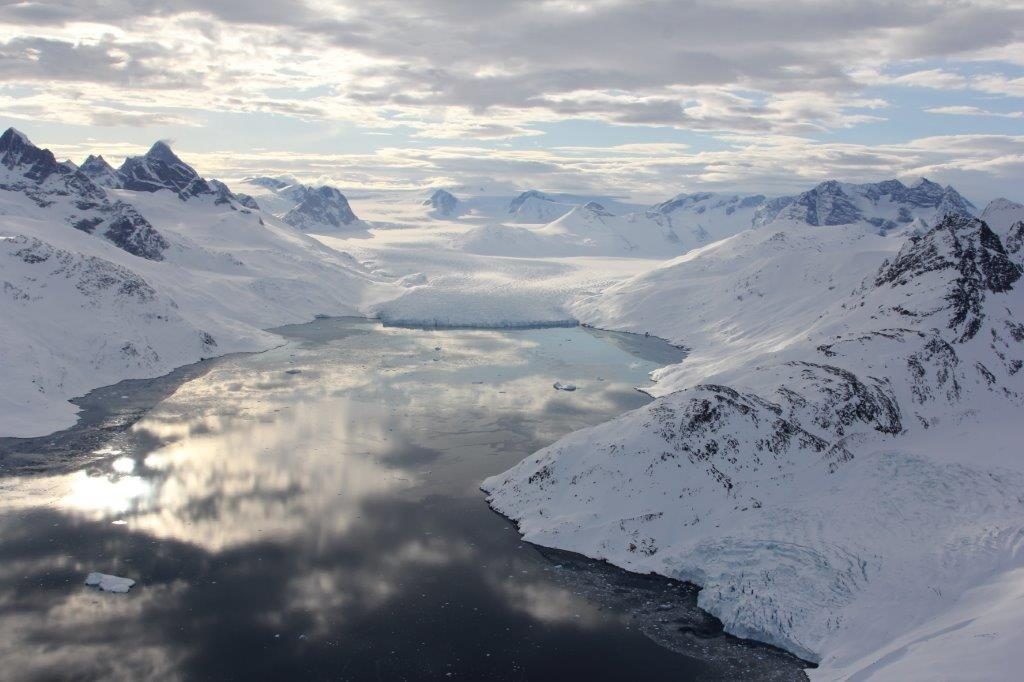18 March 2020

A glacier front in Greenland. New research shows Greenland lost 600 billion tons of ice in 2019.
Credit: Kristin Laidre.
AGU press contact:
Lauren Lipuma, +1 (202) 777-7396 (UTC-4), [email protected]
Contact information for the researchers:
Isabella Velicogna, University of California Irvine
+ 1 (949) 824-5419 (UTC-7), [email protected]
WASHINGTON—During the exceptionally warm Arctic summer of 2019, Greenland lost 600 billion tons of ice, enough to raise global sea levels by 2.2 millimeters in two months, according to new research. On the opposite pole, Antarctica continued to lose mass in the Amundsen Sea Embayment and Antarctic Peninsula but saw some relief in the form of increased snowfall in Queen Maud Land, in the eastern part of the continent.
These new findings and others by glaciologists at the University of California, Irvine and NASA’s Jet Propulsion Laboratory are published today in AGU’s journal Geophysical Research Letters.
“We knew this past summer had been particularly warm in Greenland, melting every corner of the ice sheet, but the numbers are enormous,” said Isabella Velicogna, a professor of Earth system science at UCI and lead author of the new study.
Greenland lost a 4,550 billion tons of ice between 2002 and 2019, an average of 268 billion tons annually – less than half what was shed last summer. To put that in perspective, Los Angeles County residents consume 1 billion tons of water per year.
“In Antarctica, the mass loss in the west proceeds unabated, which is very bad news for sea level rise,” Velicogna said. “But we also observe a mass gain in the Atlantic sector of East Antarctica caused by an increase in snowfall, which helps mitigate the enormous increase in mass loss that we’ve seen in the last two decades in other parts of the continent.”
Velicogna and her colleagues came to these conclusions in the process of establishing data continuity between the recently decommissioned Gravity Recovery and Climate Experiment (GRACE) satellite mission and its new and improved successor, GRACE Follow-On.
A project of NASA and the German Aerospace Center, GRACE satellites were designed to make extremely precise measurements of changes in Earth’s gravity. The spacecraft have proven to be particularly effective at monitoring the planet’s water reserves, including polar ice, global sea levels and groundwater.
The first GRACE mission was deployed in 2002 and collected data for more than 15 years, a decade longer than its intended life span. Toward the end of this period, the twin GRACE satellites began to lose battery power, leading to the end of the mission in October 2017.
GRACE Follow-On – based on a similar technology but also including an experimental instrument using laser interferometry instead of microwaves to measure minute changes in distance between the twin spacecraft – was launched in May 2018. The gap between the missions made it necessary for Velicogna and her cohort to test how well data collected by the GRACE and GRACE-FO missions matched.
“It’s great to see how well the data line up in Greenland and Antarctica, even at the regional level,” she said. “It’s a tribute to the months of effort by the project, engineering and science teams to make the endeavor successful.”
###
AGU (www.agu.org) is an international association of more than 60,000 advocates and experts in Earth and space science. Through our initiatives, such as mentoring, professional development and awards, AGU members uphold and foster an inclusive and diverse scientific community. AGU also hosts numerous conferences, including the largest international Earth and space science meeting as well as serving as the leading publisher of the highest quality journals. Fundamental to our mission since our founding in 1919 is to live our values, which we do through our net zero energy building in Washington, D.C. and making the scientific discoveries and research accessible and engaging to all to help protect society and prepare global citizens for the challenges and opportunities ahead.
Notes for Journalists
This paper is freely available through April 30. Download a PDF copy of the article here.
Journalists and PIOs may also request a copy of the final paper by emailing Lauren Lipuma at [email protected]. Please provide your name, the name of your publication, and your phone number.
Neither the paper nor this press release is under embargo.
Paper Title:
“Continuity of ice sheet mass loss in Greenland and Antarctica from the GRACE and GRACE Follow-On missions”
Authors:
Isabella Velicogna, Eric Rignot: University of California Irvine, Irvine, California, United States; Jet Propulsion Laboratory, Pasadena, California, United States;
Yara Mohajerani, A. Geruo: University of California Irvine, Irvine, California, United States;
Felix Landerer, David Wiese: Jet Propulsion Laboratory, Pasadena, California, United States;
Jeremie Mouginot: University of California Irvine, Irvine, California, United States; University of Grenoble Alpes, Grenoble, France;
Brice Noel, J.M. van Wessem: University of Utrecht, Utrecht, The Netherlands;
Michiel van den Broeke: University of Grenoble Alpes, Grenoble, France; University of Utrecht, Utrecht, The Netherlands;
Tyler Sutterley: Polar Science Center, Applied Physics Laboratory, University of Washington, Seattle, Washington, United States.
Additional press contacts:
Brian Bell, University of California Irvine
+1 (949) 824-8249, [email protected]